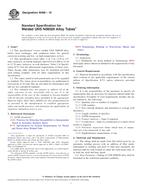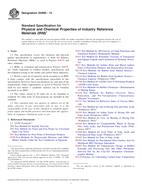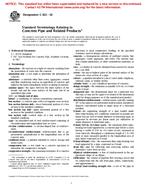1.1 Purpose and Application-This guide covers the equipment, field procedures, and interpretation methods for the assessment of subsurface conditions using the seismic refraction method. Seismic refraction measurements as described in this guide are applicable in mapping subsurface conditions for various uses including geologic, geotechnical, hydrologic, environmental (1), mineral exploration, petroleum exploration, and archaeological investigations. The seismic refraction method is used to map geologic conditions including depth of bedrock, or the water table, stratigraphy, lithology, structure, and fractures or all of these. The calculated seismic wave velocity is related to mechanical material properties. Therefore, characterization of the material (type of rock, degree of weathering, and rippability) is made on the basis of seismic velocity and other geologic information.
1.1.1 The geotechnical industry uses English or SI units.
Product Details
- Published:
- 12/15/2018
- Number of Pages:
- 14
- File Size:
- 1 file , 430 KB
- Redline File Size:
- 2 files , 910 KB


